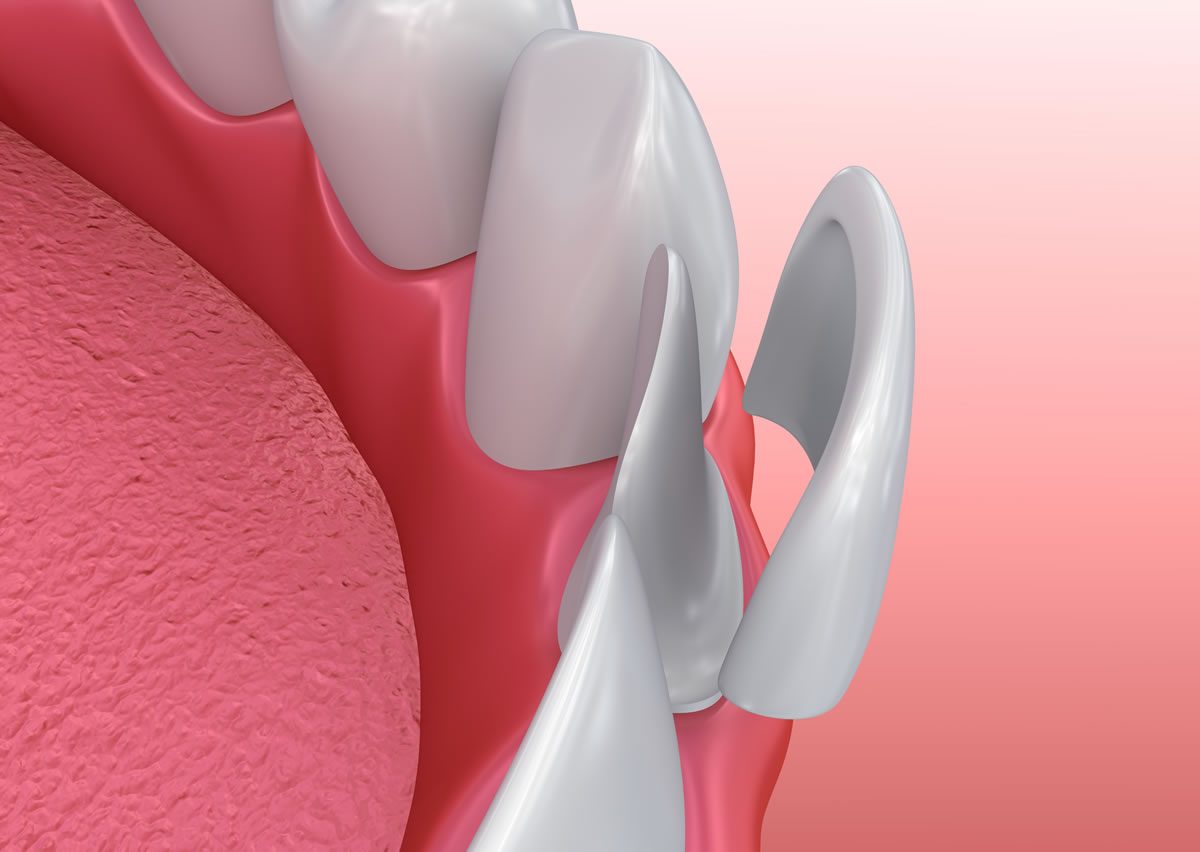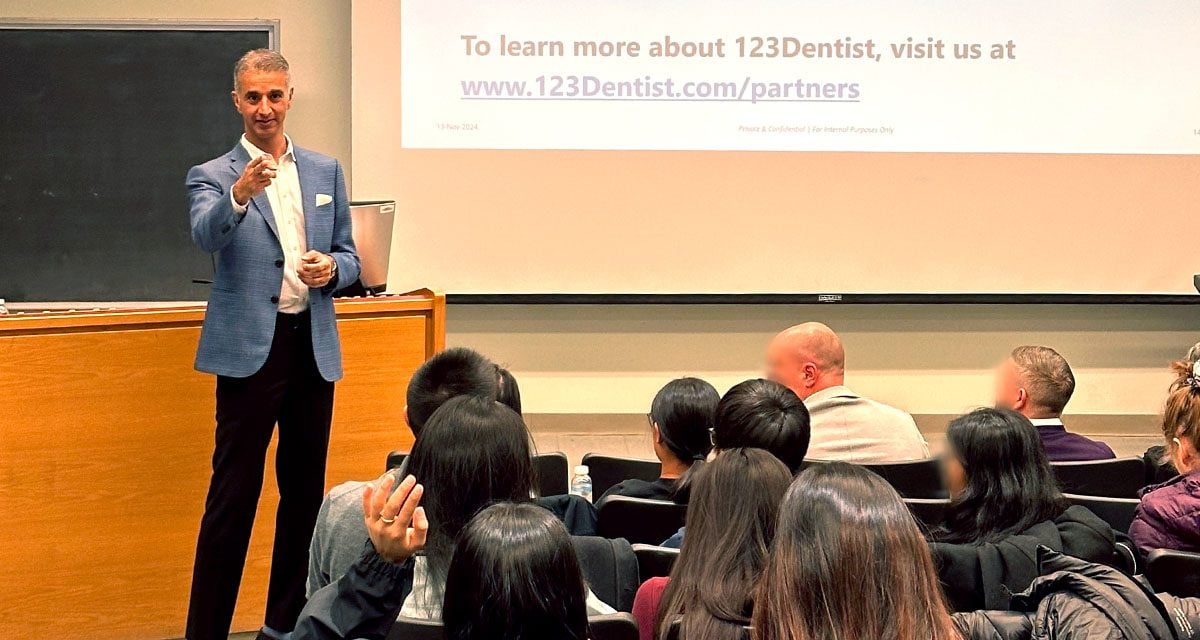Veneers have been around for almost a century, and in that time have changed drastically. From fake tooth caps that came off after a few hours to teeth that look natural, veneers have improved in manifold ways. If you’re worried about the longevity or appearance of veneers, read on to learn how impressive this cosmetic technology has truly become.
The History of Porcelain Veneers
Porcelain veneers have been around since the late 1920s, and it should be no surprise that they began in Hollywood. A California dentist came up with a way to enhance the smiles of his Hollywood star patients. His name was Dr. Charles Pincus, and he came up with an acrylic tooth cap that fit over the person’s existing teeth. The stars would wear the caps during movie scenes, then remove them. Though this is a long way from the porcelain permanent veneers we think of today, it’s the beginning of using veneers to perfect someone’s smile.
Between the 1920s and the 1950s, regular people began getting veneers to help shape their smiles, especially in the face of disease or tooth loss. By the 1950s, dentists were bonding veneers to the teeth, but were having difficulty getting them to adhere properly. Veneers were now made of either porcelain or composite, and Dr. Michael Bunocore figured out a procedure for lightly etching the tooth’s surface with mild acid. That created a surface that a bonding agent could better stick to, making the veneers much more permanent and attractive.
The veneers we think of today really began in the early 80s. Veneers became more affordable and easier to place, which made them popular solutions for people with cosmetic issues.
Today’s Porcelain Veneers
[image-comparator title=”Gum reshaping and veneers were used to improve her smile.” left=”https://www.123dentist.com/wp-content/uploads/2017/12/no-prep-veeneer_5-1.jpg” right=”https://www.123dentist.com/wp-content/uploads/2017/12/no-prep-veeneer_5-2.jpg” method=”overlay” width=”100%” value=”50″ overlayed_slider=”false” hide_slider=”false” classes=”hover” link_images=”false” left_alt=”Gum reshaping and veneers were used to improve her smile.” right_alt=”Gum reshaping and veneers were used to improve her smile.” left_title=”Gum reshaping and veneers were used to improve her smile.” right_title=”Gum reshaping and veneers were used to improve her smile.”][/image-comparator]
When you have veneers put on today, you can choose between traditional veneers and no-preparation veneers.
With traditional veneers, your dentist will remove a very small amount of enamel from the tooth or teeth that will be receiving the veneer. Then, your dentist takes an impression of your slightly shaved tooth, so a veneer can be crafted for it. It’ll take between two and four weeks to receive the veneer. If you’re worried about an unsightly smile, you can get temporary veneers during the interim.
With no-preparation veneers, there is no removal or shaving your natural teeth required, and the veneers are fitted directly over your existing natural teeth.
Before placing them permanently, your dentist checks the final veneer’s fit and appearance in your mouth. Adjustments in veneer color can be made at this point. If the veneer doesn’t fit perfectly, the dentist can trim it down. After cleaning, polishing, and etching your tooth, your dentist will bond the veneer to your tooth. Even after the veneer has been placed and cemented, your dentist can still make bite and fit adjustments. Today’s veneers last for between 10 and 30 years, which is a huge improvement over the old style that barely stayed in place.
Avoiding Chicklet Teeth With Today’s Veneers
[image-comparator title=”In this example, we were able to do some instant orthodontics, and cover the discolourations at the same time” left=”https://www.123dentist.com/wp-content/uploads/2017/12/no-prep-veeneer_4-1.jpg” right=”https://www.123dentist.com/wp-content/uploads/2017/12/no-prep-veeneer_4-2.jpg” method=”overlay” width=”100%” value=”50″ overlayed_slider=”false” hide_slider=”false” classes=”hover” link_images=”false” left_alt=”In this example, we were able to do some instant orthodontics, and cover the discolourations at the same time” right_alt=”In this example, we were able to do some instant orthodontics, and cover the discolourations at the same time” left_title=”In this example, we were able to do some instant orthodontics, and cover the discolourations at the same time” right_title=”In this example, we were able to do some instant orthodontics, and cover the discolourations at the same time”][/image-comparator]
[image-comparator title=”Years of wear on these teeth easily reversed with 4 porcelain veneers and whitening” left=”https://www.123dentist.com/wp-content/uploads/2017/12/no-prep-veeneer_9-1.jpg” right=”https://www.123dentist.com/wp-content/uploads/2017/12/no-prep-veeneer_9-2.jpg” method=”overlay” width=”100%” value=”50″ overlayed_slider=”false” hide_slider=”false” classes=”hover” link_images=”false” left_alt=”Years of wear on these teeth easily reversed with 4 porcelain veneers and whitening” right_alt=”Years of wear on these teeth easily reversed with 4 porcelain veneers and whitening” left_title=”Years of wear on these teeth easily reversed with 4 porcelain veneers and whitening” right_title=”Years of wear on these teeth easily reversed with 4 porcelain veneers and whitening”][/image-comparator]
One problem with veneers is something people have nicknamed “chicklet teeth.” This signifies teeth that are obviously fake, either because they’re too big, too white, or not a natural shape. Teeth that are exactly, perfectly straight (straighter than even braces can achieve) also look like chicklet teeth. Initially, people getting veneers ended up with this result, because the focus was on making teeth look perfect. Even if a dentist only used one or two veneers to cover a spotted or damage tooth, that veneer would stand out either because it didn’t match in shape or color with the rest of the teeth.
In fact, people have realized that subtle flaws in someone’s smile help it look more natural, and more attractive. After seeing too many chicklet smiles on Hollywood stars, patients receiving veneers began to request a more natural look. That doesn’t mean veneers that look like the same teeth that are being covered up, but veneers that are a tiny bit flawed in an aesthetically pleasing way. It’s more expensive, but very worth it. After all, the wrong set of veneers can look foreign inside your mouth. The aim is to make them look like they belong to you, and you just got lucky with almost white, almost perfect teeth.
To prevent that fake “chicklet teeth” look, today’s dentists are taking more time and effort crafting and applying veneers. The dentists work with the people responsible for creating the porcelain caps in specialized labs, achieving subtle translucency on the edges, the right shape to match your real teeth, and a perfect contour are all part of it. Creating a natural colour that matches your existing teeth while still looking attractively white is another important aspect of good veneers. When you find a dentist who puts this kind of effort into creating and applying your veneers, you’ll end up with a gorgeous smile that looks almost perfect, and totally real.
Whether you need to have a stained or unattractive tooth capped, or you want to fix significant problems with your visible teeth, veneers can provide that smile for you. Find a 123Dentist member clinic that can help you get veneers that are perfect for your smile.






